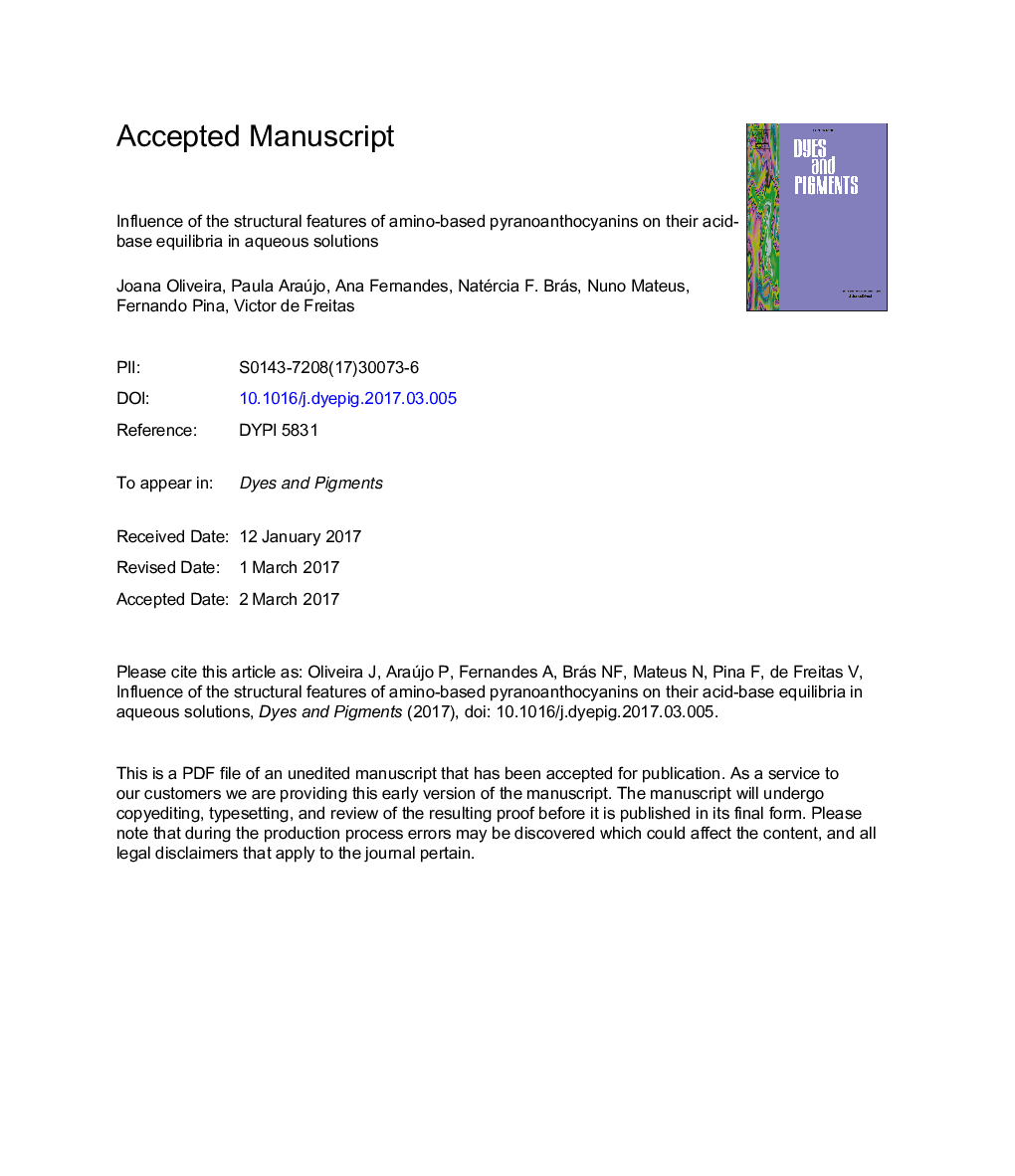| Article ID | Journal | Published Year | Pages | File Type |
|---|---|---|---|---|
| 4765978 | Dyes and Pigments | 2017 | 37 Pages |
Abstract
The equilibrium forms of three different families of dimethylamino-based pyranoanthocyanins (1, 2 and 3) were studied in aqueous solutions at different pH values from 1 to 12 using UV-Visible spectroscopy. The forms present under those conditions are strongly correlated to the pyranoanthocyanin structural features. The increase of the electronic delocalization helps the protonation at the amino group. At very acidic pH condition (pH < 0) the protonation at the amino group is observed for the three pigments, but under less acidic conditions (pHâ¼1) it only occurs for pigment 3 (pKa1 = 2.4 ± 0.1) and at a lesser extent for pigment 2 (pKa1 = 1.1 ± 0.1). At the same time, the increase of the electronic delocalization on the amino-based pigments also favors the deprotonation at the hydroxyl group present at carbon C-7 yielding the neutral quinoidal base (pKa2 = 2.7 ± 0.1, pKa2 = 4.8 ± 0.1 and pKa2 = 5.4 ± 0.1 for pigment 3, 2 and 1, respectively). For pigment 3, the maximum molar fraction obtained for the pyranoflavylium cation form is â¼0.4 due to the proximity of the two acid-base constants (pKa1 and pKa2) which indicates that at the pH range 1-5 three forms of the compound are present in equilibrium (pyranoflavylium dication, pyranoflavylium cation and neutral quinoidal base). The second deprotonation at the 4â²-OH was less affected by the structural features of the pigment with the ionization constant situated at pKa3â¼9 (pKa3 = 9.5 ± 0.1, pKa3 = 8.9 ± 0.1 and pKa3 = 9.8 ± 0.1 for pigment 1, 2 and 3, respectively).
Related Topics
Physical Sciences and Engineering
Chemical Engineering
Chemical Engineering (General)
Authors
Joana Oliveira, Paula Araújo, Ana Fernandes, Natércia F. Brás, Nuno Mateus, Fernando Pina, Victor de Freitas,
